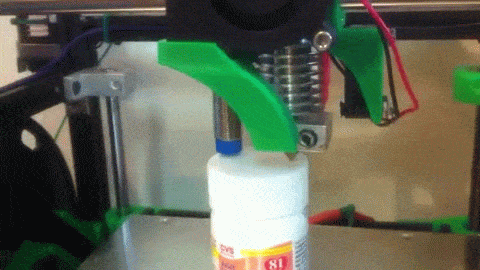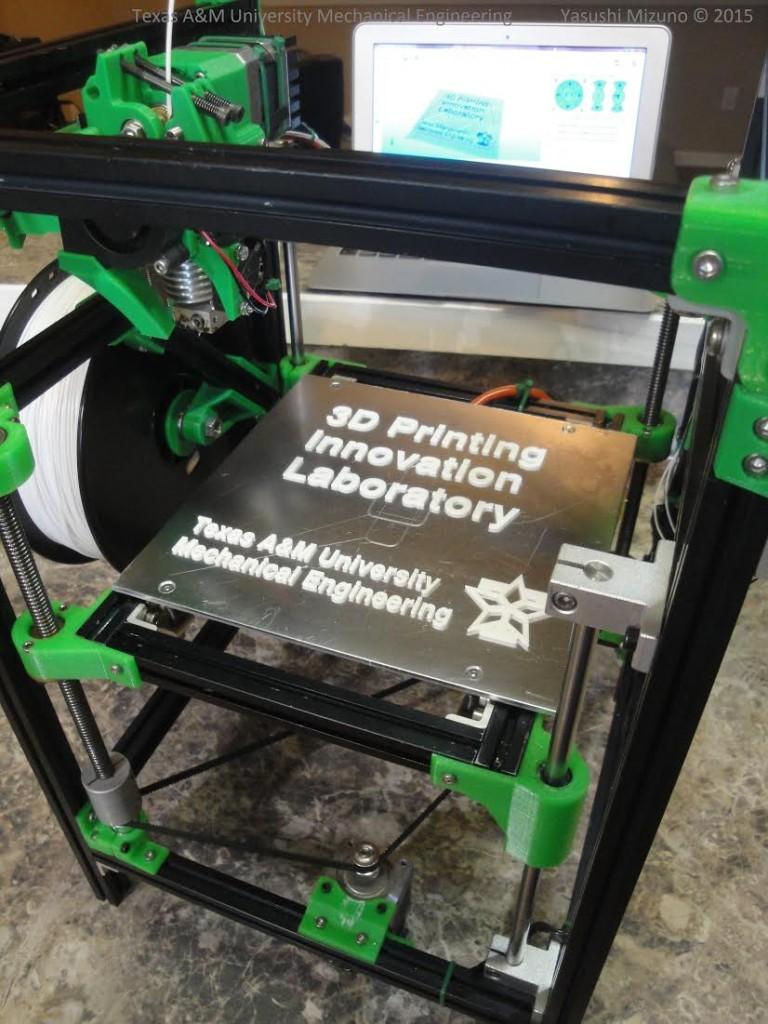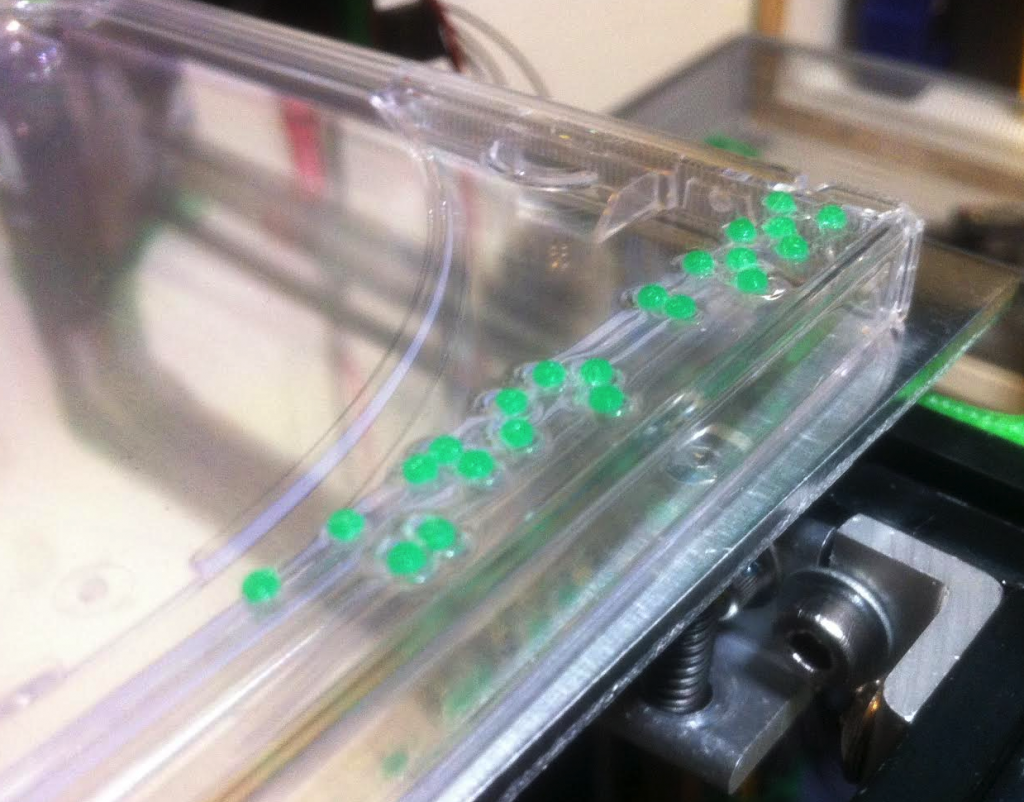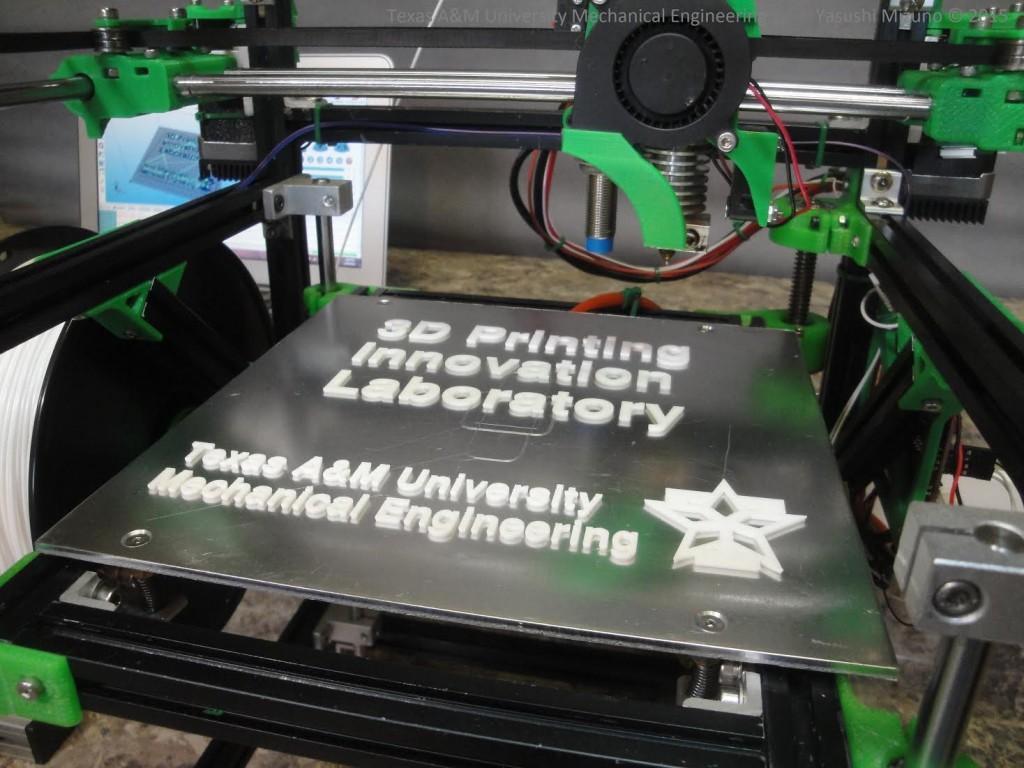As technology improves, so do the lives of those individuals living with disabilities all around the world. 3D printing has become one of those technologies aiding in creating custom devices, prostheses, and more for individuals who previously would have been left with fewer reliable options. The visually impaired have found the technology of 3D printing to be quite beneficial in the fabrication of various sensory objects. We’ve seen a blind expectant mother get to touch a 3D printed replica of her unborn child back in May, and we have seen 3D printing used in the creation of various Braille tools over the past several months as well.
For a group of researchers at Texas A&M University, they wanted to take things a few steps further in utilizing 3D printing to create tools for the visually impaired. What they came up with was a 3D printer that is capable of printing Braille characters on any kind of plastic packaging used in common consumer products. Unlike other 3D printers, which are only capable of printing on flat surfaces, this machine is able to print on products regardless of the extent of existing surface curvature.
Created by the Texas A&M ‘3D Printeers’ team, under the supervision of Dr. Tanil Ozkan, TAMU Mechanical Engineering Professor, the printer is currently patent pending.
“[We hope to increase] the awareness of the 3D Printing community about the doability of [this 3D printer] on any kind of plastic packaging and ultimately help convince online or store-based retailers to also include Braille differentiated products in their product portfolio with very affordable secondary processing costs,” Dr. Tanil Ozkan tells 3DPrint.com.
 Unlike other 3D printers on the market today, which printing using mostly PLA or ABS plastics, the TAMU 3D Braille Printer uses a specially formulated 3D printing filament which provides for enhanced adhesion characteristics for printing onto every kind of polymeric surface. TAMU Mechanical Engineering senior Yasushi Mizuno, Boston‐based professional software engineer Artug Acar, and Ozkan contributed to the realization of this proprietary technology. The filament that the printer uses is a plant-based sustainable and recyclable thermoplastic with optimized rheological properties, a durable surface texture, and it features enhanced UV and oxidation resistance. It was developed by TAMU Mechanical and Industrial Engineering students Bryan Conlee, Eduardo Vasquez, and Yasushi Mizuno in collaboration with Ozkan.
Unlike other 3D printers on the market today, which printing using mostly PLA or ABS plastics, the TAMU 3D Braille Printer uses a specially formulated 3D printing filament which provides for enhanced adhesion characteristics for printing onto every kind of polymeric surface. TAMU Mechanical Engineering senior Yasushi Mizuno, Boston‐based professional software engineer Artug Acar, and Ozkan contributed to the realization of this proprietary technology. The filament that the printer uses is a plant-based sustainable and recyclable thermoplastic with optimized rheological properties, a durable surface texture, and it features enhanced UV and oxidation resistance. It was developed by TAMU Mechanical and Industrial Engineering students Bryan Conlee, Eduardo Vasquez, and Yasushi Mizuno in collaboration with Ozkan.
The material properties that this printer is capable of printing with ensures that the Braille characters that are printed onto objects stay there, don’t peel off, and are resistant to normal wear and tear. In order for the printer itself to accomplish printing on various curved surfaces, it was designed in such a way that it can recognize the curvature of polymeric surfaces on various consumer product packaging. It uses a non-contact sensor to determine the curvature of the object to be printed on.
“Flat or curved polymeric surfaces, whose topography data are collected via the non‐contact sensor are reconstructed automatically in the design software and used as the reference surface to calculate the x, y and z offsets through spline fitting before generating the additive manufacturing process code sequence for the actual 3D printing of Braille characters,” Ozkan and the rest of the team at Texas A&M tells us.
 The idea is to convince retailers that this technology will aid them in labeling packaging for the visually impaired, via a method that is both affordable and reliable. Whether it is dosage instructions on a medicine bottle, an expiration date on some sort of food packaging, or anything else that could be beneficial to the visually impaired, this technology certainly provides much hope for making their lives a bit less burdensome.
The idea is to convince retailers that this technology will aid them in labeling packaging for the visually impaired, via a method that is both affordable and reliable. Whether it is dosage instructions on a medicine bottle, an expiration date on some sort of food packaging, or anything else that could be beneficial to the visually impaired, this technology certainly provides much hope for making their lives a bit less burdensome.
 It is the intention of these researchers to donate all the rights associated with the pending patent to the Braille Museum and American Printing House for the Blind, Inc. in Louisville, Kentucky, in order to support further research. While this technology currently is targeting solutions for Braille printing, without a doubt, it could also provide for other uses within the 3D printing space. The idea of printing onto curved surfaces, and printing using material that adheres reliably to other plastics, could provide for much benefit in other fields as well.
It is the intention of these researchers to donate all the rights associated with the pending patent to the Braille Museum and American Printing House for the Blind, Inc. in Louisville, Kentucky, in order to support further research. While this technology currently is targeting solutions for Braille printing, without a doubt, it could also provide for other uses within the 3D printing space. The idea of printing onto curved surfaces, and printing using material that adheres reliably to other plastics, could provide for much benefit in other fields as well.
Texas A&M has also entered this design into the NASA Tech Briefs Create the Future Design Contest, under the ‘Consumer Products’ category.
What do you think about this unique 3D Braille printer? Discuss in the TAMU 3D Braille Printer forum thread on 3DPB.com. Check out the Braille printer in action below.
Subscribe to Our Email Newsletter
Stay up-to-date on all the latest news from the 3D printing industry and receive information and offers from third party vendors.
You May Also Like
Printing Money Episode 17: Recent 3D Printing Deals, with Alex Kingsbury
Printing Money is back with Episode 17! Our host, NewCap Partners‘ Danny Piper, is joined by Alex Kingsbury for this episode, so you can prepare yourself for smart coverage laced...
Insights from Cantor Fitzgerald on AM’s Q1 2024 Landscape
A recent survey by Cantor Fitzgerald sheds light on the persistent challenges within the additive manufacturing (AM) industry in the first quarter of 2024. Based on responses from 38 industry...
3D Printing Financials: Xometry’s Scaling up and Strong Start to 2024
Xometry (Nasdaq: XMTR) kicked off 2024 with strong results, boosting its marketplace and technology to new heights. Both revenue and gross margin soared, fueled by an expanding global network of...
3D Printing Financials: Desktop Metal Targets Recovery Amid Net Losses and Revenue Downturn
Despite facing a decline in revenue and the persistent challenges of a tight economic climate, Desktop Metal (NYSE: DM) is making strides toward operational efficiency. The first quarter of 2024...


































